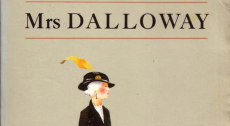
Email: reecejordan98@hotmail.co.uk
Total Article : 168
About Me:18-year-old sixth form student, studying English Literature, History and Government and Politics. My articles will broadly cover topics from the current affairs of politics to reviews of books and albums, as well as adding my own creative pieces, whether it be short fiction or general opinion.

In Hermione Lee’s biography of Virginia Woolf, she states that ‘confident enjoyment of the intimacy which comes from reading [was] one of the main sources of happiness in Virginia Woolf’s life.’ The notion of intimacy – both derived from reading and experienced in relationships – is a theme which underpins Woolf’s novel, Mrs. Dalloway. In exploring Clarissa’s decision to marry Richard over Peter, these articles will illustrate, firstly, the insipidness of their marriage as a consequence of this decision, and how this is reflected in the descriptions of their home. Next, attention will turn to Clarissa’s relationship with Peter and display how he offers no heroic alternative, but instead is maintained as the worst option of the two due to his and Clarissa’s excessive intimacy. Woolf’s narrative style will then be explored, and it will be shown how its technicalities create a sense of intimacy between a character’s consciousness and the reader. This style of narrative, it will follow, allows Woolf to explore the subtle boundary between sane and insane. It will be intertwined throughout that what Woolf champions most throughout the novel is the idea of the privacy of the soul.
Perhaps the primary illustration of the economies of intimacy within Mrs. Dalloway revolves around Clarissa’s choice to marry Richard Dalloway over Peter Walsh. Woolf depicts the men in strict opposition: Peter and Clarissa have an ‘exquisite intimacy,’ where they have the ‘power of communicating without words,’ and feel like they ‘live in each other.’ Richard, in contrast, feels as if he can only tread lightly on the thin ‘spider’s thread of attachment between himself and Clarissa.’ However, it is the latter of the two men whom she chooses to marry, opting ‘for a prudent marriage,’ as David Bradshaw states, ‘instead of giving rein to her heart.’ There are dramatic consequences for this choice of prudence over impulse, of detachment over intimacy, the first of which to be explored is an insipid and potentially stifling marriage.
The most detail we can derive from Clarissa’s marriage to Richard is the way in which she describes their home together. After buying the flowers for her party, Clarissa enters her home and we are told ‘she felt like a nun.’ Of this description, Irene Simon suggests that it is an ‘image which supplies a religious feeling, the sense of offering thankfulness; it implies a serenity and acceptance of life which gives value to the life she has just left.’ Whilst Simon is right to point out the ‘religious feeling’ of the image, she too readily evokes the positive connotations attributed to it; we must remember how scathing Clarissa can be towards religion.
Image Credits: clairestemen.com

0 Comment:
Be the first one to comment on this article.